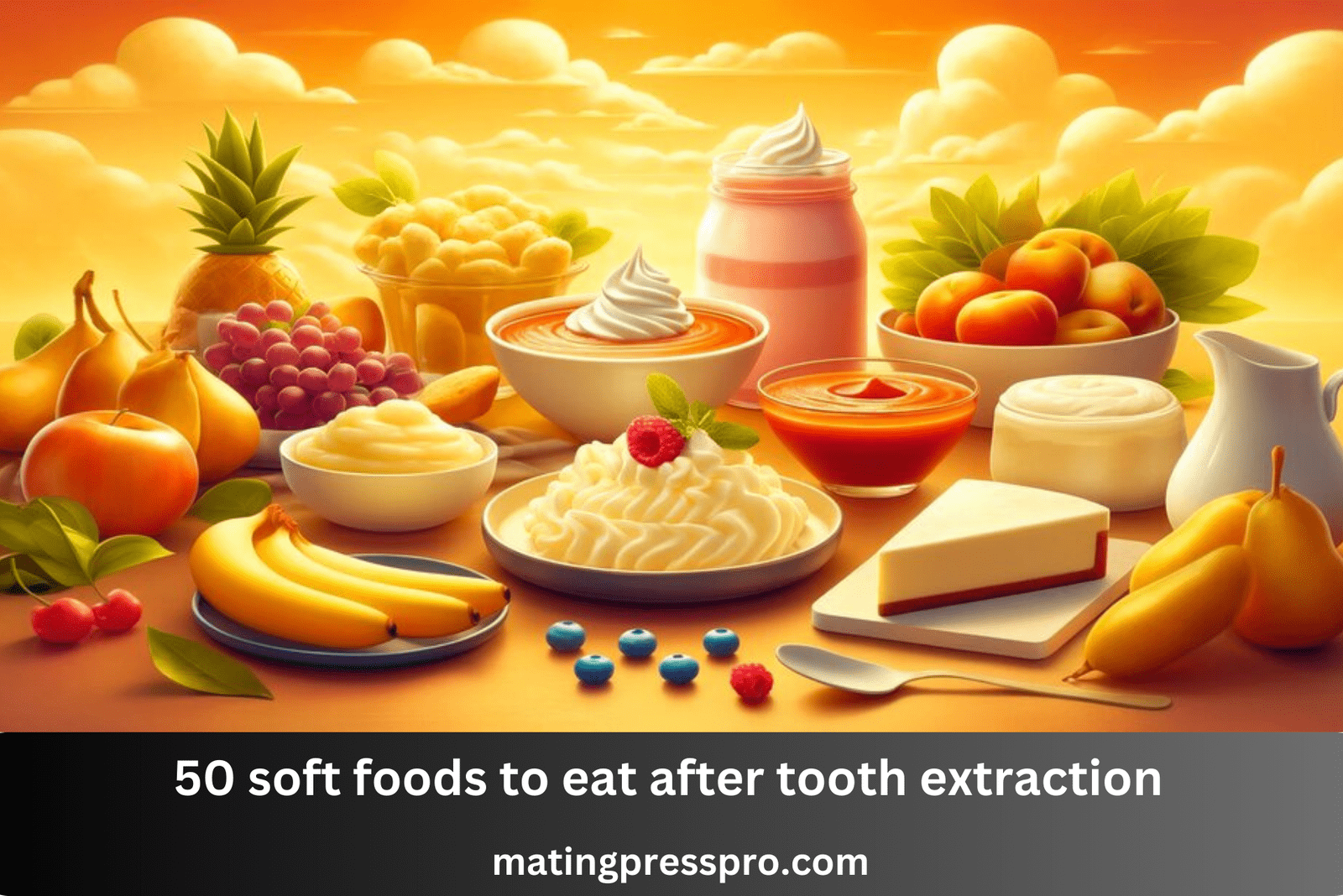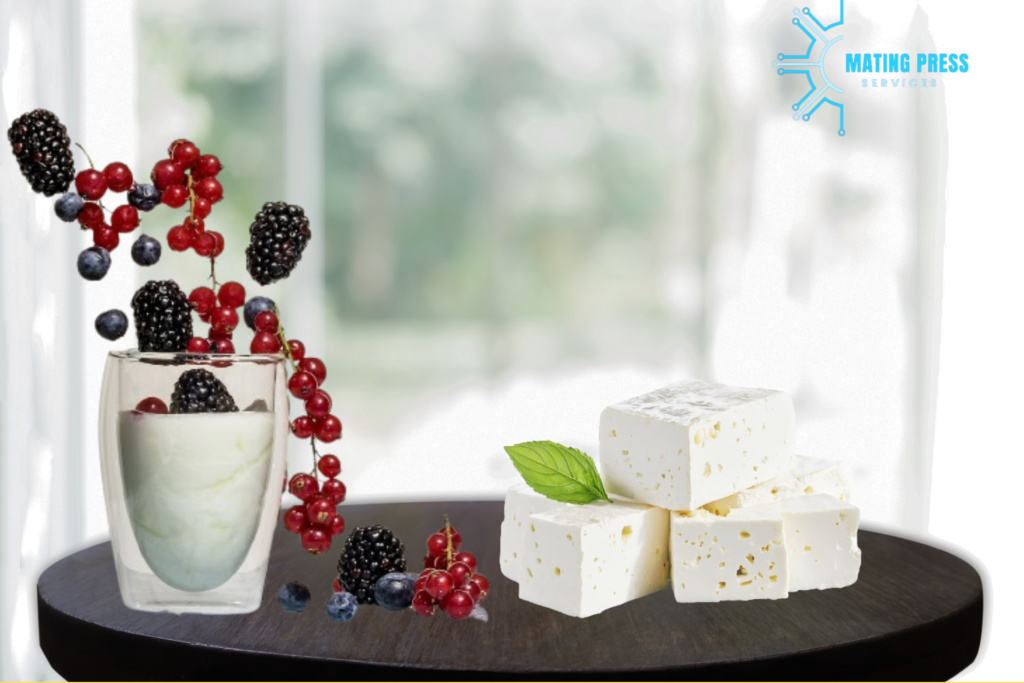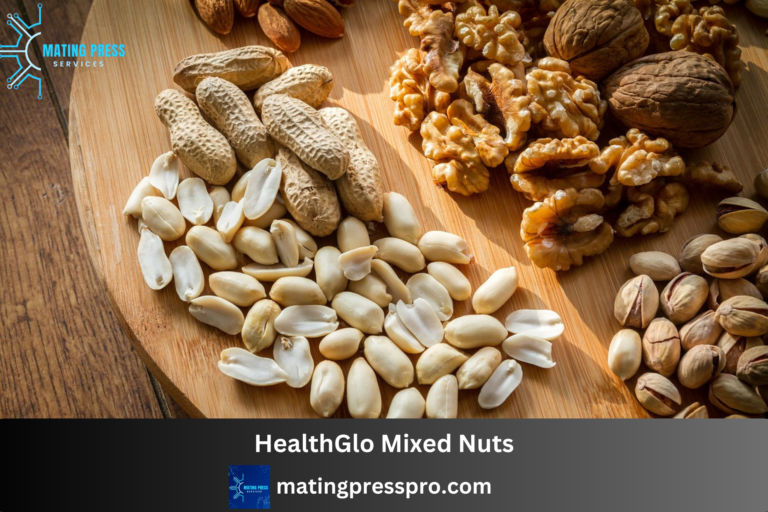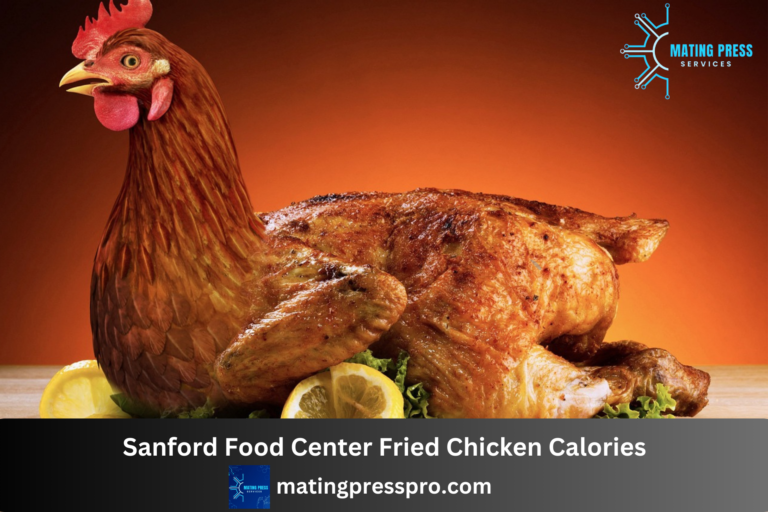50 Soft Foods To Eat After Tooth Extraction

Tooth extraction, a frequently performed dental procedure, is usually aimed at removing wisdom teeth, damaged teeth or those that cause overcrowding. Although the procedure itself is quite direct, special care should be paid to the recovery stage in relation to dieting. Besides helping in the process of healing, consuming properly chosen foods will help lessen pain and prevent any possible complications. Therefore, here is an extensive list of 50 soft foods for post-tooth extraction recovery grouped into categories which will enable you to keep up with a balanced and enjoyable diet.
Understanding the Need for Soft Foods
Importance of Soft Foods Post-Tooth Extraction
Tooth extraction leaves the mouth highly vulnerable and the extracted site needs time to heal effectively. This period requires soft meals as they prevent injury or irritation on those areas. Hard or crunchy foods can easily dislodge this clot leading to dry socket which elongates healing time. Conversely, soft meals ensure that such sites remain intact hence facilitating faster healing.
Common Challenges After Tooth Extraction
Post tooth extraction commonly results in symptoms like swelling, soreness and inability to fully open one’s mouth. These symptoms make chewing painful and difficult thus stressing on importance of a soft diet post tooth extraction. In addition, maintaining proper nutrition is important for giving your body the nutrients it needs for repairing tissues as well as overall recovery.
Nutritional Considerations Tooth Extraction
Essential Nutrients for Recovery
During this time however, there are specific nutrients required by your body for tissue repair, fighting infections among other necessities needed for good health maintenance. Tissue repair depends on presence of proteins while vitamins A & C are vital when it comes to healing process together with immune functions Calcium and magnesium also enhance bone strength while hydration maintains general wellness of an individual taking part in these activities Thus selecting nutrient-rich food sources would not only assist in recovering but promote energy levels as well as good state of health.
Balancing Taste and Nutrition
Eating should be an enjoyable process, even when you are recovering. Thus it is important to choose foods that are both nutritious and enjoyable. This variation in taste and texture from meal to meal will prevent ever getting tired of eating thus increasing the chances of sticking to the diet. Different varieties of soft foods can help fill nutritional gaps as well as make meals tastier.
Categories of Soft Foods
This guide divides 50 soft foods into six major groups: dairy, fruits, vegetables, proteins, grains and cereals, and sweets and desserts. Each category provides some selections for various nutritional requirements and tastes making it easier to plan balanced diets.
50 Soft Foods to Eat After Tooth Extraction
- Mashed Potatoes: Smooth and creamy, perfect for soothing the mouth.
- Yogurt: Soft and soothing; choose plain or lightly flavored varieties.
- Applesauce: Smooth and easy to swallow, ideal for post-surgery recovery.
- Pudding: Creamy and gentle on the mouth for tooth extraction.
- Custard: Smooth, creamy, and easy to eat.
- Smoothies: Blended fruits with yogurt or milk, providing essential nutrients.
- Ice Cream: Creamy and soothing, but avoid varieties with hard pieces.
- Gelato: Dense and smooth, an excellent choice for those recovering.
- Sorbet: Dairy-free and smooth, with refreshing fruit flavors.
- Creamed Soups: Strained and smooth, without chunks.
- Broths: Clear or creamy, easy on the tooth extraction site.
- Scrambled Eggs: Soft and easy to chew.
- Mashed Sweet Potatoes: A nutritious and smooth alternative to regular mashed potatoes.
- Avocado: Creamy and gentle, can be eaten plain or blended.
- Soft Cheese: Like cream cheese or ricotta, easy to consume without chewing.
- Oatmeal: Cooked until very soft and smooth.
- Cream of Wheat: Smooth and gentle on the mouth.
- Soft Tofu: Can be blended into smoothies or soups for added protein.
- Bananas: Soft and easy to mash or blend.
- Peaches: Soft and easy to puree; avoid those with skins or seeds.
- Apples: Cooked and pureed into applesauce.
- Mangoes: Soft and easily blended into smoothies.
- Mashed Cauliflower: Creamy and smooth, an alternative to mashed potatoes.
- Rice Pudding: Soft and creamy, easy to eat without irritation.
- Cottage Cheese: Soft and smooth; can be eaten plain or mixed with fruits.
- Well-Cooked Pasta: Soft and easy to chew; avoid any with hard or chunky sauces.
- Polenta: Soft and creamy when cooked.
- Quinoa: Cooked until very soft and easy to chew.
- Hummus: Smooth and easy to swallow; can be eaten plain or with soft bread.
- Mashed Beans: Like black beans or chickpeas, blended to a smooth consistency.
- Smoothie Bowls: Blended fruits and yogurt, smooth and easy to eat.
- Blended Soups: Smooth and nutrient-rich; ensure no chunks remain.
- Gelatin Desserts: Like Jell-O, without added fruit chunks.
- Soft-Cooked Fish: Like salmon or tilapia, cooked until very tender and easy to flake.
- Soft-Boiled Eggs: Cooked until just set and easy to eat.
- Chia Pudding: Made with chia seeds and a liquid base; smooth and nutritious.
- Rice: Cooked until very soft, preferably without added spices or chunks.
- Mashed Squash: Smooth and creamy, easy to eat.
- Canned Fruit: In its own juice or light syrup, without seeds or tough skins.
- Soft-Cooked Carrots: Well-cooked and mashed or pureed.
- Blended Vegetables: Cooked and pureed to a smooth consistency.
- Coconut Milk: Can be consumed plain or used in recipes for added creaminess.
- Creamy Yogurt-Based Smoothies: Blended with soft fruits for added nutrients.
- Soft Pancakes: Without hard or crunchy toppings, and cooked to a soft consistency.
- Blended Rice and Lentils: Cooked until very soft and pureed.
- Soft Cheese Spreads: Like brie or camembert, smooth and easy to eat.
- Mashed Potatoes with Gravy: Smooth and easy to swallow; ensure the gravy is not too spicy or acidic.
- Creamy Macaroni and Cheese: Soft pasta with a smooth cheese sauce.
- Soft-Cooked Apples: Peeled and cooked until tender, then mashed or pureed.
- Soft Smoothie Popsicles: Made from blended fruits and yogurt, ideal for soothing and hydrating.
Tips for Eating Soft Foods After Tooth Extraction
- Temperature: Ensure that foods are not too hot or too cold, as extreme temperatures can cause discomfort.
- Consistency: Opt for foods that are smooth and free of chunks or seeds to avoid irritating the tooth extraction site.
- Nutritional Balance: Try to incorporate a variety of soft foods to ensure you receive a balanced diet with necessary nutrients for healing.
Dairy Products

Yogurt
Yogurt is versatile and nutritious comprising calcium rich option with proteins together with probiotics that aid digestion while supporting immune system functionality. Greek yogurt has high protein content which can be flavoured with honey or blended fruits thereby improving its taste as well as nutritional value.
Cottage Cheese
Cottage cheese is a creamy cheese that can also be eaten plain or mixed with peaches or bananas for added flavor; it also contains good amounts of protein and calcium.
Pudding
Pudding is a dessert, which can be consumed easily by fortifying them with protein powders or blending with fruit purees to improve their nutrition level. It has a smooth texture that makes it suitable for those who have oral discomfort.
Soft Cheese
Soft cheese includes ricotta, brie, or cream cheese which are gentle on the gums and can be used in different dishes. They provide adequate calcium and protein necessary for bone health and overall recovery.
Milkshakes
Milkshakes apart from being delicious they also help one to consume dairy products in their diet. They may be made healthier by the addition of fruits, protein powders or even oats as advised. However, straws should not be used while taking milkshakes to avoid dislodging blood clots.
Fruits
Applesauce
Applesauce is a staple food in soft diets; it contains fiber and vitamin C but lacks the acid and roughness of fresh apples. It can either be taken alone or put on top of other soft food like pancakes or oatmeal.
Bananas
Bananas are easy to mash and contain a lot of potassium which assists in muscle work as well as maintaining electrolyte balance. They can either be taken on their own, blended into smoothies or mixed with other soft foods.
Avocado
Avocado has healthy fats, vitamins and minerals that one’s body requires. Due to its creamy nature it is easy to take as such or incorporate into different recipes. For instance it can be spread over bread for sandwiches when mashed or blended into drinks such as smoothies for extra nutrients.
Pureed Fruits
Pureed fruits like peaches, pears and mangoes add sweetness and nutrition at once. These can then been combined with yogurt or cottage cheese among others so that one gets a snack that is balanced yet soft on your stomach.
Smoothies
Smoothies provide a way of incorporating many nutrition requirements into one meal. Fruits, vegetables, yogurt and protein powders can be blended to create a wholesome and nutrient-rich option. They have a smooth texture that is easy to consume especially when masticating becomes difficult.
Vegetables
Mashed Potatoes
Mashed potatoes are a traditional comfort food that is easy on the stomach. Adding butter, cream or cheese raises their calorie content in addition to nutritional value. Moreover, for people who are health-conscious it could be useful to consider incorporating pureed cauliflower or sweet potato in the mixture.
Pureed Carrots
Carrots contain beta-carotene which is important for healthy skin and immune system functioning. This makes them mashed to give them a soft texture for consumption. Herbs and spices can make them taste better without causing any harm.
Soft Squash
Soft squash may include butternut or acorn squash because they become soft after being cooked making them the easiest types of squash to mash or puree. They are rich sources of vitamin A, vitamin C and dietary fiber too. This variety adds nutrition when eaten by itself as an accompaniment with other dishes like soups.
Spinach Soufflé
Spinach soufflé allows one to eat leafy greens without so much chewing involved unlike most of the others prepared from hard foods such as meat can be swallowed up in less than five minutes by those who cannot chew properly either after surgery or due to an illness that has weakened their jaw muscles considerably. Additionally; spinach contains iron, calcium and vitamins which makes it a good ingredient for a recovery diet while its tender feel and delicate taste make it appropriate even for individuals suffering mouth ulcers as well as other dental related injuries & diseases.
Vegetable Broth
Hydrating vegetable broth contains essential nutrients, especially if supplemented with extra vitamins and minerals. You can eat it plain or use it as a base for other mushy food preparations like mashed vegetables or pureed soups. This gentle, comforting option is particularly useful when your appetite is low.
Proteins

Scrambled Eggs
Scrambled eggs are tender; they go down easily and have lots of high-quality protein. Soft cheeses, finely chopped vegetables, or herbs can make them more nourishing. To make meals less monotonous, eggs can be prepared in different ways.
Soft Tofu
Tofu is highly adaptable as a plant-based protein source. It may be added to smoothies, blended into soups or even desserts without changing the taste significantly in order to enhance protein content. Tofu also has enough iron and calcium components necessary for recovery and bone health.
Poached Fish
Fish such as salmon or cod become very soft after being poached. These fish contain omega-3 fatty acids that are good at reducing inflammation and supporting general well-being. Poached fish may be seasoned lightly and served with soft accompaniments like mashed potatoes or pureed vegetables.
Chicken Soup
Chicken soup provides comfort while providing nutrition through soft-cooked vegetables and tender chicken pieces. The stock makes you hydrated while the chicken adds vital protein content. You can spice up this traditional dish by adding herbs and mild spices to give it flavor without causing any irritation.
Lentil Soup
Lentil soup is a rich source of proteins, fibers, and other important vitamins which are healthy for your body system but need heavy food supplements too for faster healing process from illness. Cooking lentils makes them turn out soft hence easy to eat because they are boiled well until tender whereupon flavors like carrot potato spinach add extra nutritional value making a perfect meal all together balanced diet.
Grains and Cereals
Oatmeal
Oatmeal can be made soft and versatile since it can be topped with mashed bananas, honey or soft fruits. It is a good source of fiber which aids in digestion and it can also be fortified with protein powders or nuts to make it more nutritious.
Cream of Wheat
Cream of wheat is an additional hot cereal that is easy to digest and may be enriched by addition of milk, honey or fruit puree. It provides important nutrients like iron and B-vitamins hence a healthy breakfast for recovery periods.
Soft Bread
You can eat soft bread without crust with butter, jam or avocado among other spreads. Whole grain or enriched breads add some fiber and extra nutrients that support overall health and digestion.
Pancakes
Pancakes are sweet breakfast meals that are moist especially if one tops them up with yoghurt, fruit purees or nut butter among other things. For nutritional purposes, the flour used in making pancakes ca n eith er b e whole grain o r have added mashed bananas as well as blueberries.
Pasta
Soft pasta, like too cooked noodles or pasta in a cream sauce, makes good food for convalescents due to its tenderness on the mouth. However, this balanced dish can be prepared when combined with sauces rich in proteins such as vegetables; you should consider enriching your sauce with pureed vegetable purees so as to boost its nutritive values instead of just using whole grain pastas.
Candies and Pastries
For the weeks following tooth extraction, one can include soft candies and pastries in their diet for comfortability. Nevertheless, there is a need to select food items that are not only easy to chew but also will not irritate the wound area. Here is an overview of some deliciously calming desserts that may help speed up your recovery.
Ice Cream
One of the famous desserts around is ice cream which can as well be taken after a tooth extraction removal. It has a creamy texture that doesn’t strain the mouth’s tender tissues which might cause discomfort if they are sensitive due to tooth extraction.
- Types: Opt for plain ice cream without nuggets or hard materials in it. Vanilla, chocolate and strawberry are less likely to lead to any kind of pain among most people hence making them popular flavors.
- Increase its nutrition content: Some ice creams contain calcium and protein so as to enhance its nutritional quality while others provide extra vitamins and minerals.
- How to eat it: Do not use straw while taking milk shakes made from ice cream because it causes dislodgement of blood clots through suctioning. Instead, spoon feed yourself slowly.
Gelato
Gelato is similar to ice cream except that it is usually denser and more creamy than the latter. Its smoothness makes it an excellent choice for patients recovering from their teeth being extracted.
- Flavors: Avoid those which include nuts or chocolate chips, choose vanilla, hazelnuts or fruit-flavored ones.
- A Healthier Option: Gelatos without added sugars are healthier options that contain natural ingredients only. There exist low fat versions as well as non-dairy based ones almost ideal for your digestive system.
Sorbet
Sorbet contains nothing but fruit puree, water, and sugar meaning there are no dairy products included. It offers a refreshing and hydrating option that is easy on the mouth.
- Smooth: You can choose smooth sorbets without any chunks or seeds. Common choices are those that are made from different fruits such as mango, raspberry or lemon.
- Nutritional benefits: They have a high content of vitamins and antioxidants sourced from the fruits used. Sorbets contain less fat than ice cream does.
Custard
Custard is a dessert made from milk, eggs, and sugar which has a creamy consistency. The composition of the custard makes it easy to eat especially when it has been flavored with vanilla, chocolate or some kinds of fruit flavors.
- Variants: Choose among plain custards like vanilla or chocolate without either fruit pieces added in them if there are any you would prefer to avoid completely.
- Recipe guidelines: Ensure that the custard is well-cooked so that it does not spoil quickly. For making homemade custard at home customize your taste preferences and dietary needs.
Jell-O
Easily digestible Jell-O desserts made out of gelatin come in many flavors. Generally these products do not cause unnecessary discomfort for people healing after tooth extraction removals or extractions because they don’t have sharp edges.
- Flavors: Different jello tastes include berry, orange and lime among others. This should only be done in identified jello brands without fruit bits added inside the ingredients list.
- Health concerns: The calorie provision by Jell-O is relatively low due to its sugar contents therefore one should regulate its intake accordingly. Consider those with calcium or vitamin additives if you want nutrients from this source too.
Incorporating Sweets into Your Recovery Diet
Balancing Sweet Treats with Nutritional Needs
Sweet foods and desserts can be comforting while on a recovery diet. However, this should be balanced out by healthy diets that would help in achieving complete healing. Some tips to remember include:
- Moderation: Take small amounts of sweets mixed with nutrient-loaded meals rather than overeating one type of food.
- Combine with Protein: For example, you could have yogurt or cottage cheese alongside your dessert to make the overall meal more nutritious as well as aid in quick recuperation.
- Hydration: The sweets go hand in hand with water intake during consumption since they all contribute to general healing and oral health preservation.
- Avoid Sticky and Hard Ingredients: Do not eat any sweet which has sticky or hard materials that are likely to stick or hurt the tooth extraction area.
FAQs About Soft Foods and Recovery After Tooth Extraction
What soft foods are good after tooth extraction?
Following tooth extraction removal, it is important to consume only very tender foods that require no chewing and are non-irritative to the wound site. Good examples include:
Mashed Potatoes: Creamy thus easy when eaten without pain or discomforts.
Yogurt: It’s smoothness makes it a preferred choice especially plain flavors.
Applesauce: One eats it smoothly because it is already pureed hence gentle for a post-surgical nutrition plan.
Soup: Prefer strained soups but avoid those with meaty chunks or seeds.
Smoothies: Blended fruits give nutrients in an easily consumable form including yoghurt.
Pudding and Custard: They are soft enough yet edible without scratchiness inside your mouth.
Can I eat rice after tooth extraction?
Immediate consumption of rice may not be recommended owing to its chewiness and irritating effects towards fresh surgical spot. You may want to wait until you can manage soft food before introducing rice into your diet. In case, you could begin with well-cooked, soft rice that has been cooked till it is very tender.
What fruit is good for tooth extraction?
Soft fruits are the best ones which are not so hard on your teeth and can be easily eaten without food getting caught in them. Examples include:
Bananas: It can be mashed or blended into drinks as it is soft.
Applesauce: It’s smooth hence no chunks during swallowing.
Avocado: They are really creamy when ripe and can be eaten as such, or mashed into other foods.
Peeled Peaches: Once they have been pureed properly, these are gentle on sore areas of the mouth.
Avoid fruits with seeds, leathery skin or high acidity as these irritate or cause discomfort to the gums.
What to cook for someone who had oral surgery?
Focus on preparing soft meals like those that contain lots of nutrients like vitamins that do not require extensive chewing. The following options might do:
Creamy Soups: Sieve all the soups and blend them if necessary.
Mashed Potatoes: They should turn out to be smooth and creamy.
Smoothies: Soft fruits mixed with yogurt will provide added nutritional value to this drink.
Scrambled Eggs: These should always be made in a way that they are easy to chew and eat because of their softness.
Pudding and Custard: These types are gentle on your mouth thus provide a soothing effect after eating them cold from a refrigerator or freezer because of their cool temperatures.
Do not offer any hard-to-eat foods including crunchy ones; also spicy, hot meals should also be avoided altogether since they require a lot of chewing.
Is it possible to eat rice after filling?
Usually, after a dental filling, you can take rice that is soft and not sticky. However, it’s better to wait until anesthesia subsides out and you feel at ease for biting. It is important to boil the rice well so as to make it tender in order to avoid expriencing discomforts. Sticky and chewy foods should be avoided immediately right after the filling so as not to interfere with the work that has been done on your teeth.
Is rice a soft food?
Rice may be considered a soft food especially when cooked until very tender. Soft well-cooked rice is easy to bite and swallow. On the other hand, if the rice is undercooked or dry it will be hard to swallow and cause some irritation around sensitive areas of the mouth such as after an tooth extraction.
What’s the fastest way to recover from dental surgery?
In addition, follow these tips for quick recovery from any surgical process involving teeth:
Follow Post-Operative Care Instructions: Comply with your dentist’s instructions on how best your oral health ought to be taken care of including drugs administration.
Maintain Good Oral Hygiene: Brush gently and floss while keeping away from the tooth extraction site until you are healed.
Stay Hydrated: Take ample water avoiding sugary or acidic drinks.
Rest and Avoid Strenuous Activities: Allow your body time for healing by not engaging yourself in heavy duties.
Eat a Balanced Diet: Eat well-cooked soft foods which are nutritional hence ensure fast healing of wounds.
Avoid Smoking and Alcohol: This act hampers healing causing complications instead of curing them.
What foods heal oral surgery?
Some examples of such foods include:
Protein-Rich Foods: Soft proteins like eggs, yogurt, tofu help for tissue repair.;
Fruits and Vegetables: Soft fruits and vegetables, such as bananas, cooked carrots, are important for providing the right vitamins and minerals.;
Smoothies: Nutrient-filled blended with fruit, veggies and yogurt, which can be eaten without any irritation.;
Broths and Soups: They are not only rich in nutrients but also easily consumed.
It is always a good idea to go for foods that do not harm or irritate your teeth while at the same time helping them to heal faster.
Can I eat Maggi after tooth extraction?
Maggi noodles or other instant noodles such as these might not be ideal immediately following of a tooth extraction. While they may be soft when cooked they come with seasoning that may be spicy or irritating. Additionally, the noodles themselves may require more chewing than desired. On the other hand if you choose to have some make sure it’s really well cooked rice without spices or chunks that could aggravate the area where your tooth extraction was taken out. As a general rule of thumb it would be better to stick to bland soft food over difficult to manage healing area.
Tooth Extraction Conclusion
When managing one’s diet after tooth extraction, it is advised that gentle soft foods should be chosen so as to give room for proper healing process in one’s mouth. Proper selection of food along with adherence to recovery protocols enables smooth convalescence from surgery. In case you remain concerned about anything connected with this procedure or still experience discomfort , feel free seeking advice from your dentist personally






